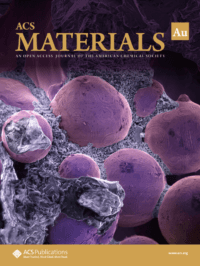Professor Stephanie Brock is the journal's Deputy Editor. In this interview, learn about what inspires her research, her tips for early-career scientists, and what she looks for in a manuscript.

Professor Stephanie Brock from Wayne State University is the journal’s Deputy Editor. In this interview, she reveals more about herself, offers her top tips for developing a research career, and shares what her superpower would be.
So, Stephanie – what drew you to materials science?
My first real introduction to materials science was in graduate school. I arrived at U.C. Davis, having worked for two-plus years at U. Washington as an undergraduate researcher in the lab of Jim Mayer doing inorganic molecular transformations. I thought I knew a lot. Then I went to one of Susan Kauzlarich’s group meetings and discovered that I knew, in fact, very little. At the time, in 1990, Chemistry of Materials was a brand-new journal, Journal of Materials Chemistry didn’t yet exist, and solid-state/materials chemistry was not a part of the standard undergraduate curriculum for a Chemistry degree. I joined the Kauzlarich group because I was really excited about this “new” discipline and the opportunities it afforded for interdisciplinary research.
What were the biggest challenges for you in developing a research career?
My biggest challenge was—and still is—overcoming my own insecurities. These days we have a term for it: imposter syndrome. I am still learning to accept that I am “good enough” and to embrace my authentic self.
Do you have any tips for aspiring researchers to help them develop their careers?
Find lots of good mentors. I have been fortunate to have exceptional mentors who pushed me scientifically, professionally, and personally to achieve my best. Individual success is a mirage; you need people who are willing to invest the time and effort to advise, promote, and affirm you. Keep in mind that finding mentors means searching for them, so you need to be prepared to reach out and ask for help/advice.
What does open science mean for you as a researcher?
On the receiving end, open science is immediate gratification. It is not worrying about whether my library has a subscription to a particular journal or figuring out how to access subscription journals while on the road. It lets me focus on the research. On the delivery end, it enhances the impact of my work by ensuring that everyone can access and build upon it without impediment.
As the Deputy Editor of ACS Materials Au, what are you looking for in a paper?
The topical scope of ACS Materials Au is quite broad—think of it as a combination of Chemistry of Materials, ACS Applied Materials and Interfaces, and ACS Materials Letters—but gold open access. The papers we seek to publish are:
- High-quality in terms of study design and implementation.
- Impactful, in the sense that they bring new, ideally translatable, insights to materials development and implementation.
- Significant, addressing knowledge gaps and global challenges that limit our ability to advance as a society.
Finally, if we could grant you one superpower: what would it be, and why?
The ability to shrink myself to the nanometer scale. That way, I could surf around reactions and “see” what is really going on.
ACS Materials Au is ready to receive your research. It will be subject to the same robust, fair, and efficient peer review of all ACS journals to ensure it promotes science that truly progresses materials science. And open access brings the main benefit that all interested readers have instant access, meaning your work can make more of an impact, quicker.
***
Learn More about ACS Materials Au.
